
Cosmos Flowers for the 2024/2025 Summer Season
Hello friends,
Today I thought I'd share with you some of the cosmos varieties I grew in our flower garden over the summer.
First up we have the Xsenia variety, which I grew from seed I got from Emerden last winter. This cosmos variety is just stunning and really unique, and I love the dark band of pink on the edges of the petals. The shade of pink in the petals do change as the flowers get older, so by picking them at different times, you will get a range of colours from just one variety.
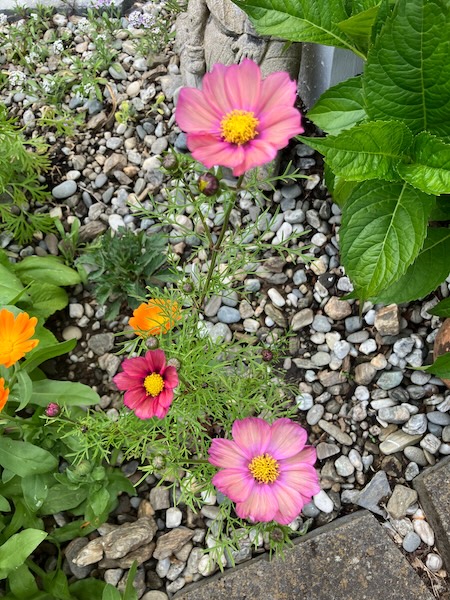
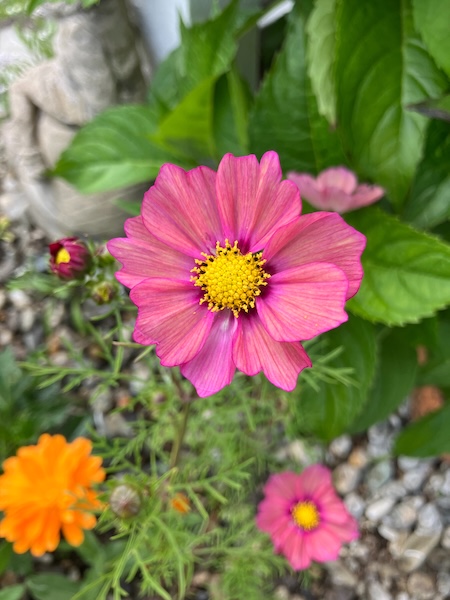
Next up we have the Apricotta cosmos variety, that I got from Kings Seeds. It has a similar apricot/pink colour to Xsenia, but the flower is much more open. It wasn't really my favorite, when compared to the Xsenia variety, so I won't be sowing any new seeds next spring.

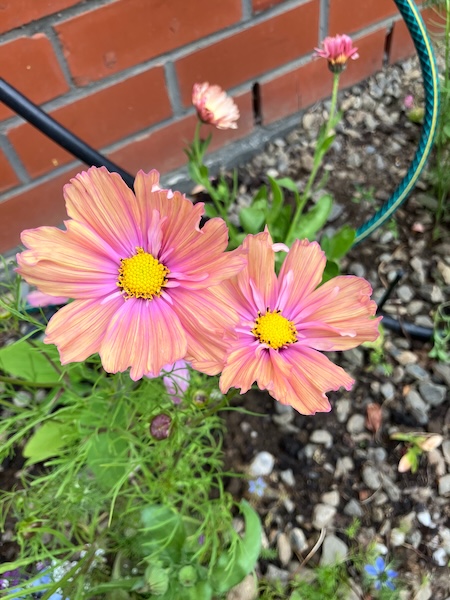
Then we have the variety, Cosmos Cupcakes White, which I bought as seed from Susie Ripley Gardening. And wow, this cosmos variety really stands out in the garden. I love the cupped flowers, that really do look like the bottoms of cupcakes. These flowers blow daintily in the breeze, making a lot of movement in the garden on windy days. I'm definitely growing these again next year.
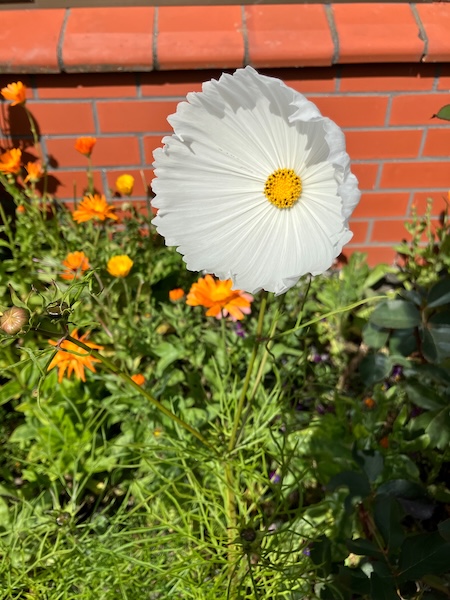
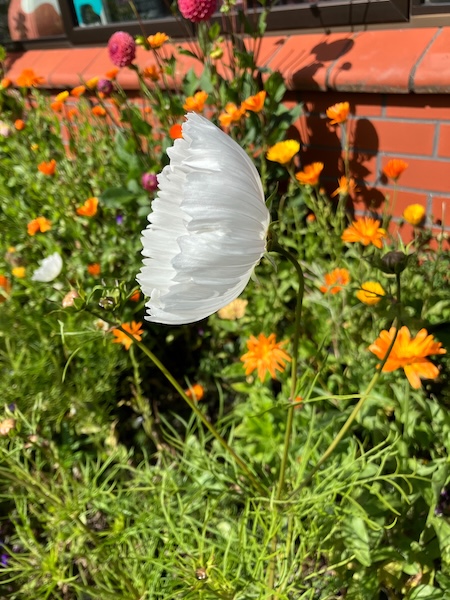
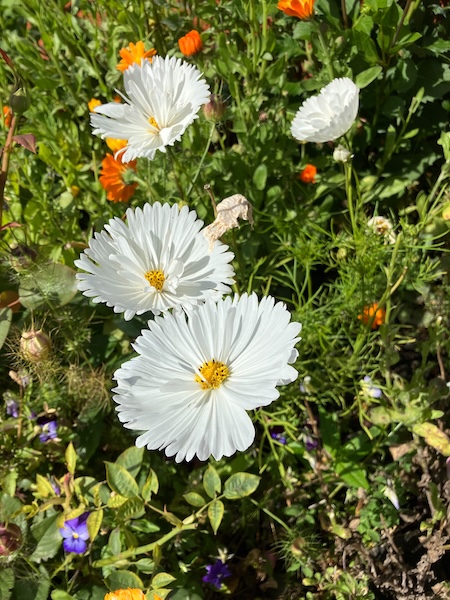
I also bought Cosmos Cupcakes Blush seeds from Susie Ripley. They're the same as Cosmos Cupcakes White, but they're a light pink in colour. They weren't as nice as the white variety, with the pink colouring not being even on the petals, so I don't think I'll buy them again.
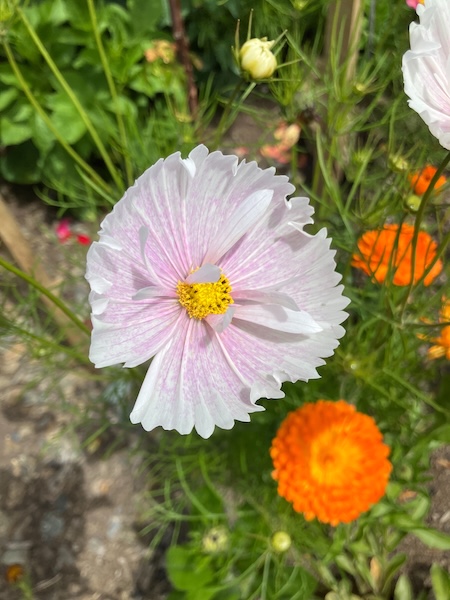
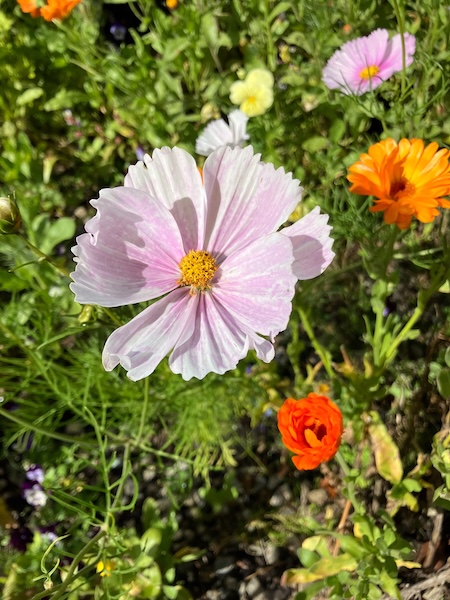
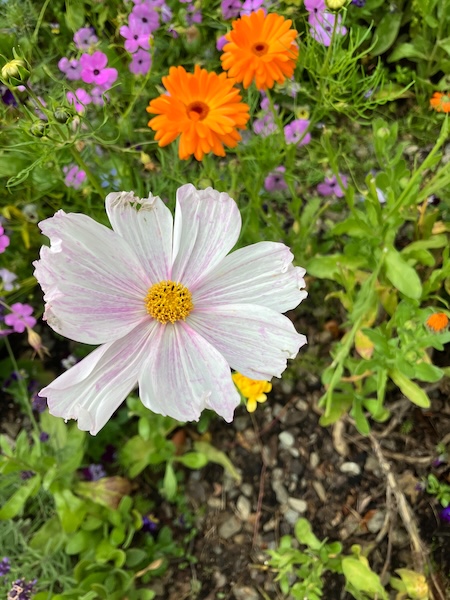
And finally, we have my new favorite cosmos variety, Cosmos Fizzy White, which I also bought as seed from Susie Ripley Gardening. These white cosmos flowers come in all sorts of variations of fizzy white flowers, and they're just so beautiful in the garden. Of the ten or so plants around my garden, each flower type was slightly different, but each one was just stunning. I'm definitely going to grow a lot more of these in the garden next spring. And as a bonus they were complete bee and butterfly magnets all summer long.
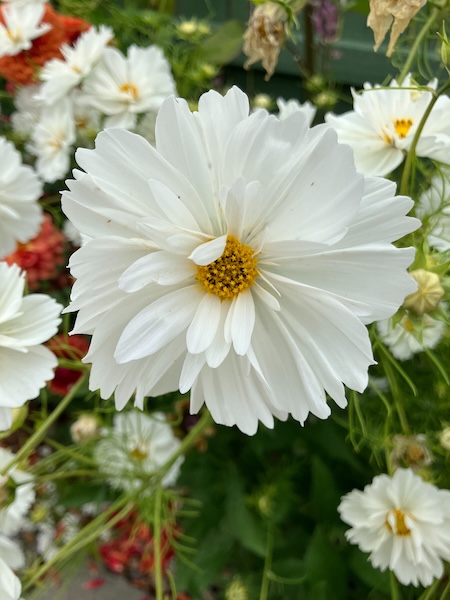
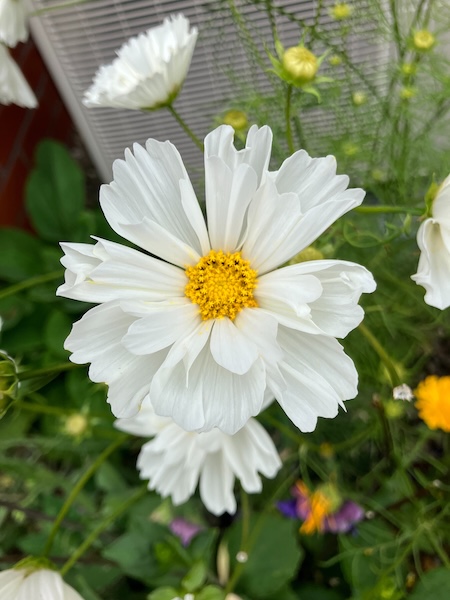
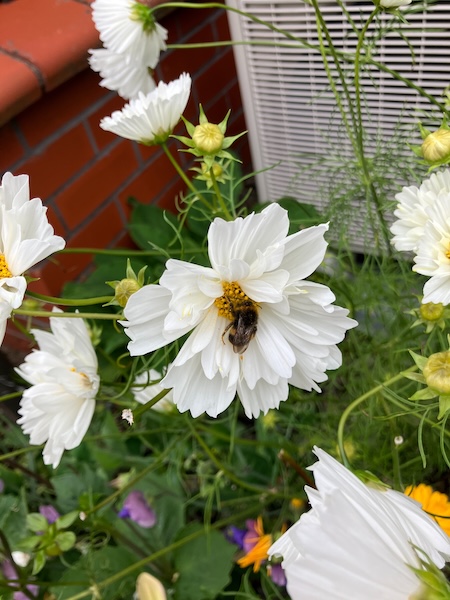
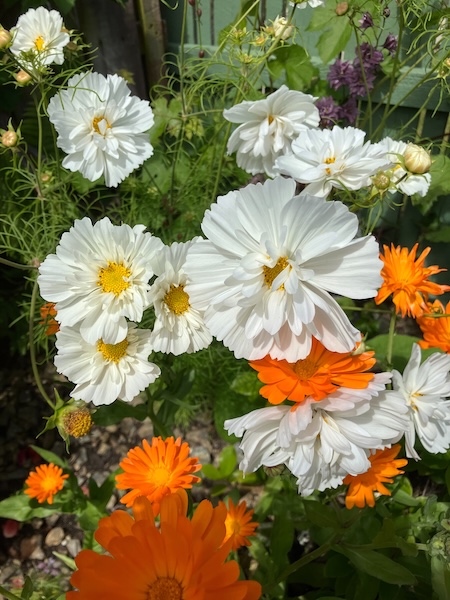
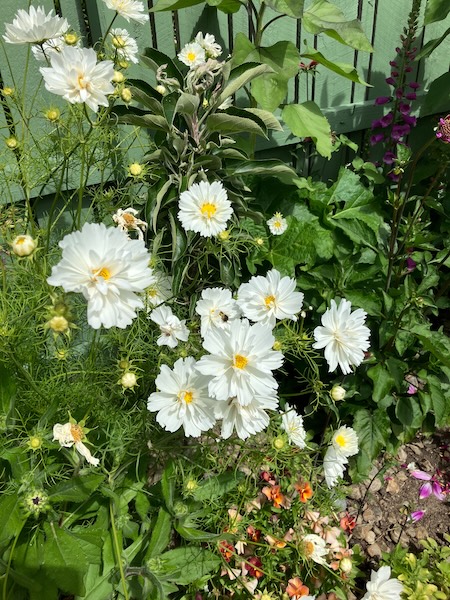
I hope you've enjoyed taking a look at all the cosmos varieties I grew this last summer. I can't wait to begin growing them again next spring.
Have a wonderful day
Julie-Ann
Want to discuss my post? Feel free to chat with me on Instagram or Mastodon or Bluesky.
Dahlia Profile - Keith Hammett Beeline II Flowers
Hello friends,
Today's dahlia profile is for the dahlias grown from Keith Hammett's Beeline II dahila seed mix.
From his website: "This series is different as it is based on 'Dark Destiny', a cultivar resulting from a cross between a dwarf hybrid garden dahlia and Dahlia sherffii, a species not previously used in Dahlia breeding...The colours are more restrained and much of their beauty lies in light being transmitted through the ray florets (petals) to give a stained glass window effect. Compact self supporting plants with finely divided foliage."
I sowed 6 seeds, and all of them grew big enough to plant out in the garden, and they all flowered.
Dahlia 1:
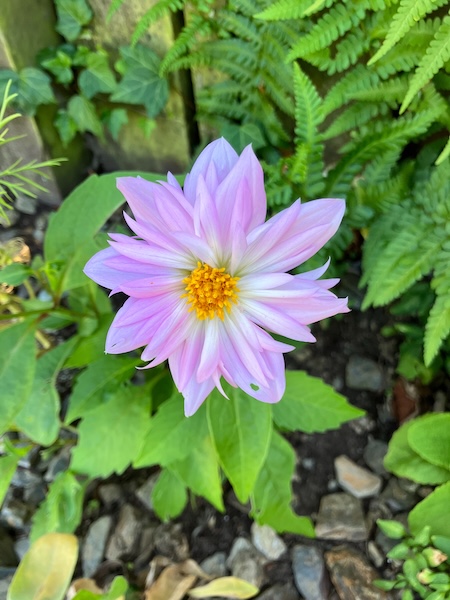
Dahlia 2:
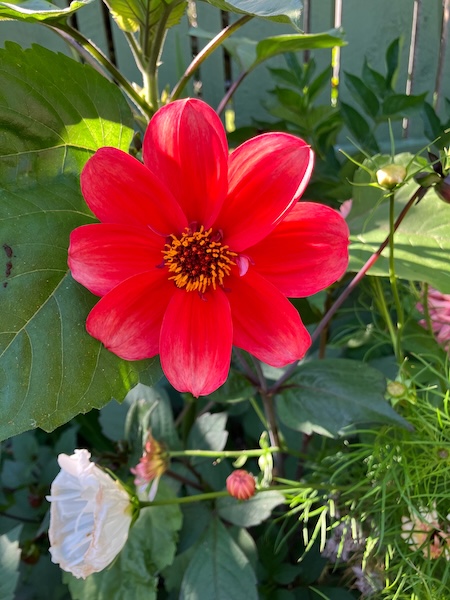
Dahlia 3:
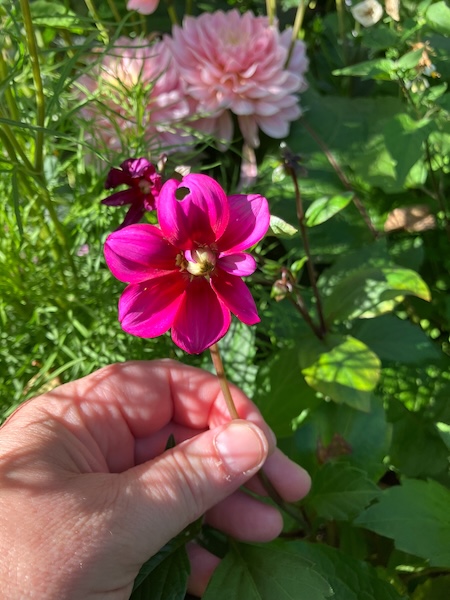
Dahlia 4:

Dahlia 5:
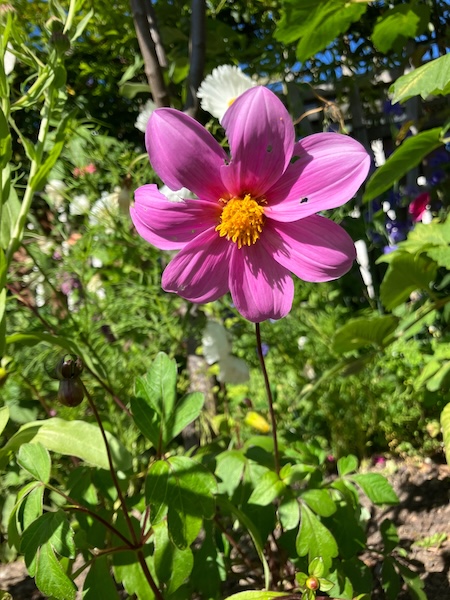
Dahlia 6:
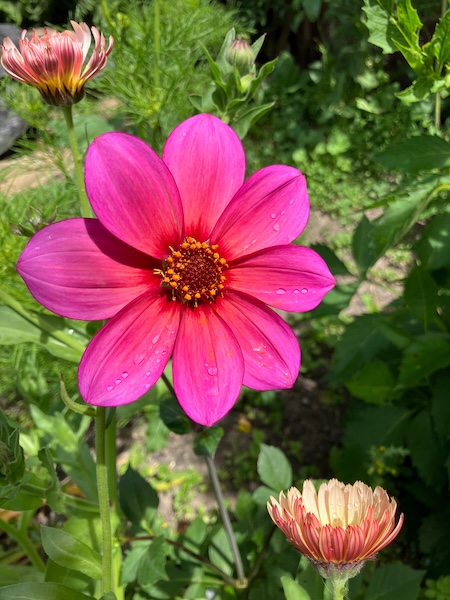
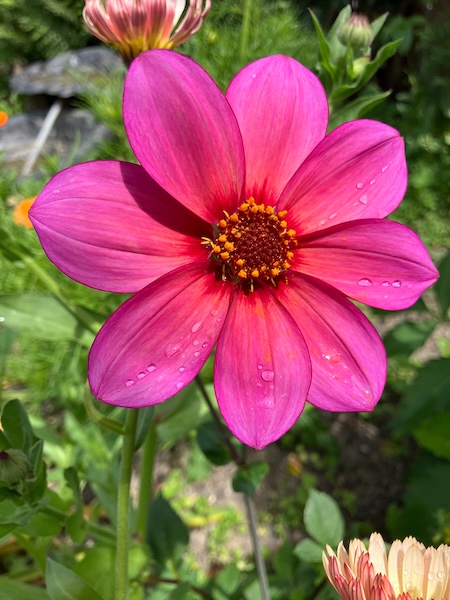
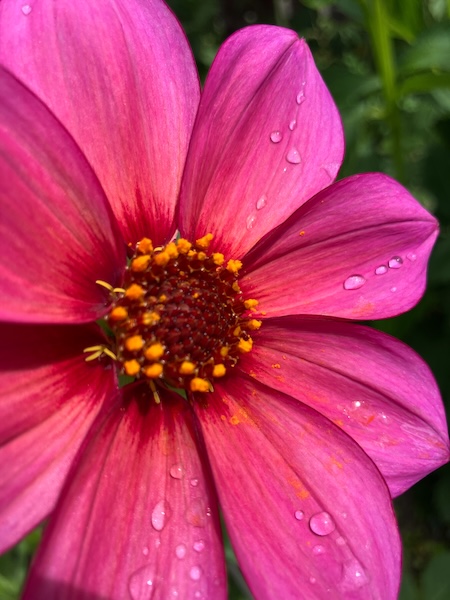
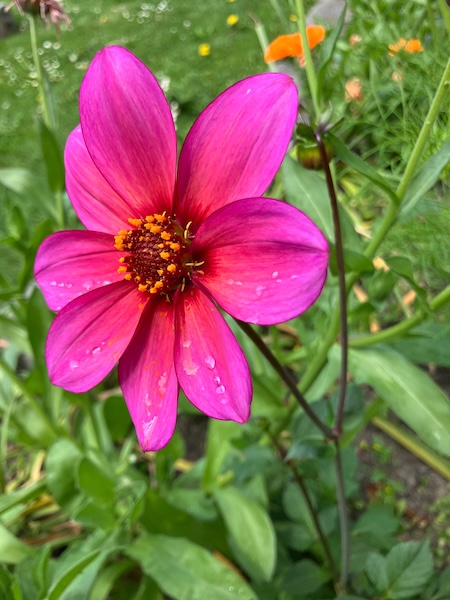
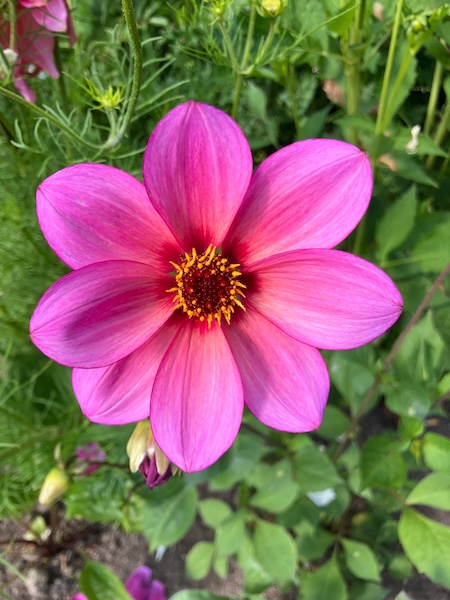
As you may have noticed, Dahlia 6 really is the star out of all dahlias grown from Keith Hammett's Beeline II seed mix. The inner part of the ray florets are a deep tangerine which changes ombré style into dark pinks/purples. There is also streaks of dark pink coming out from the inside of the floret all the way to the outside. It definitely has a stained glass effect, and it really stands out in the garden.
Out of all the Beeline II dahlias I grew, only dahlia 6 stands out well enough for me to want to keep the tuber in the coming years. Dahlias 2, 3, 4, and 5 are all pretty plain looking, and don't interest me. Dahlia 1 is kind of tempting, but we'll see how it performs over the rest of the summer and autumn to gauge if it will be worth keeping it.
Have a wonderful day
Julie-Ann
Want to discuss my post? Feel free to chat with me on Instagram or Mastodon or Bluesky.
Processing Damask Rose Flowers For Rose Water and Essential Oil
Hello friends,
And welcome to 2025 on my blog. I did a bunch of stuff over the Christmas break, so in the coming weeks you'll see what I got up to crafting and gardening wise during that time. One of the things I got up to in November and December, was to harvest, and then process my own damask rose flowers.
Damask roses hail from Syria, and their flowers have been used to make rose essential oil and rose water for thousands of years, for use in both perfumes and food. In New Zealand, damask rose plants are hard to come by, and it took me a few years to get hold of two rose bushes from small, specialty rose growers. The two varieties of damask rose bushes in my back garden are Duc De Cambridge and Isapahan.
Duc De Cambridge.
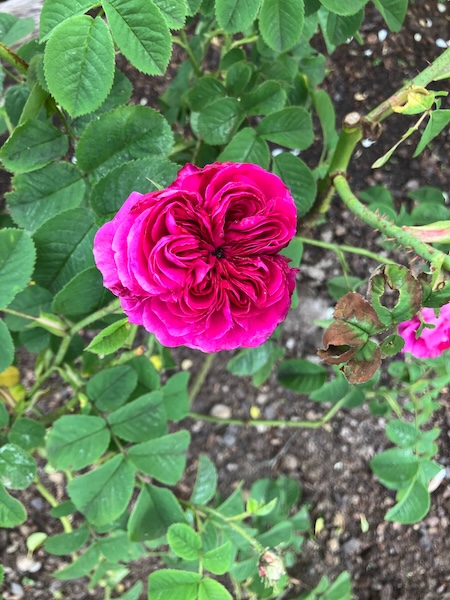
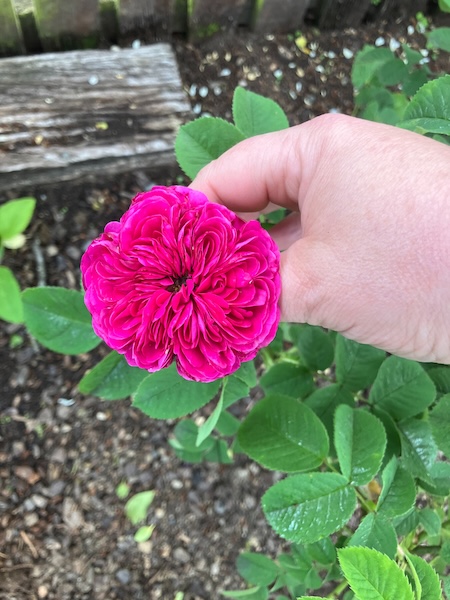
Isapahan.
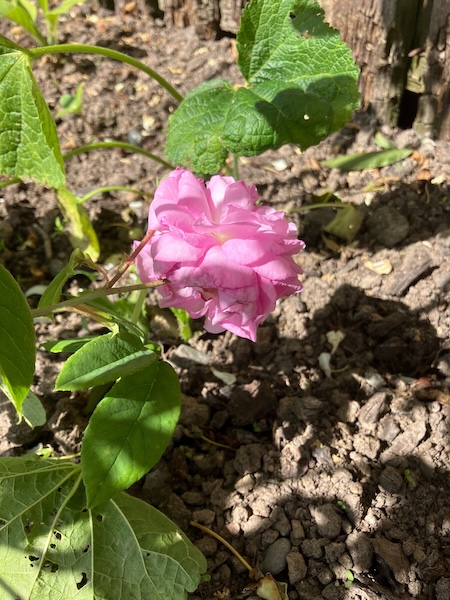
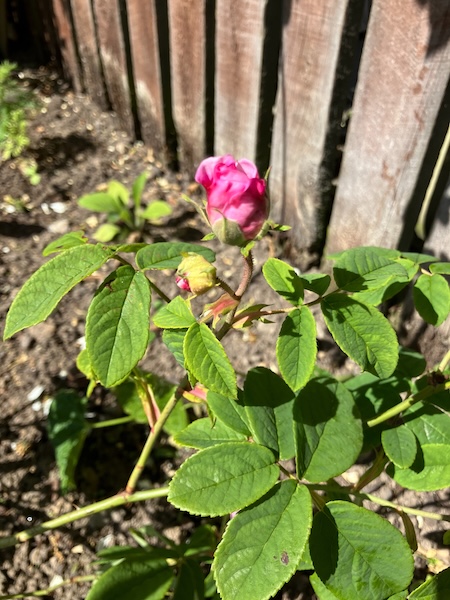
Damask roses only flower once in spring, and their flowering happens over the course of a month. After some research, I found a scientific paper which said that the damask rose flowers could be stored at -20˚C for a month without losing any rose essential oil, in order to collect enough rose flowers to process them by steam distillation. From mid-November to mid-December, I went out into the back garden each morning, and collected flowers from my damask rose bushes, and them stored them in our chest freezer.
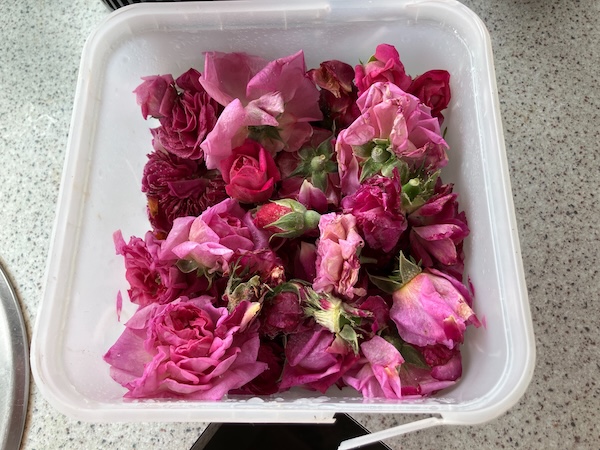
When flowering finished in mid-December, I defrosted my damask rose flowers and placed them inside my Air Still pot still for distillation. After filling the still with enough water to cover the roses, I began distilling the rose essential oil and rose water.
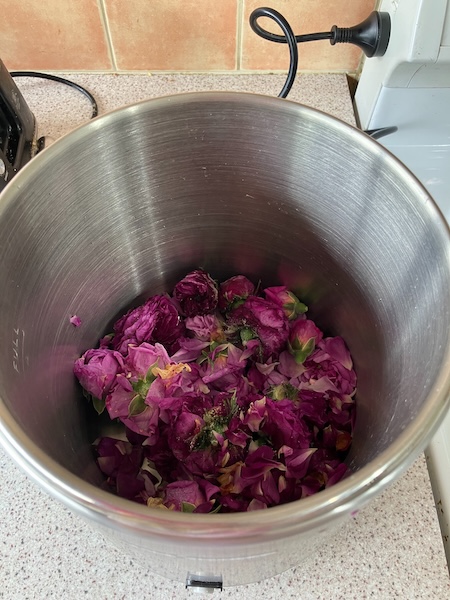
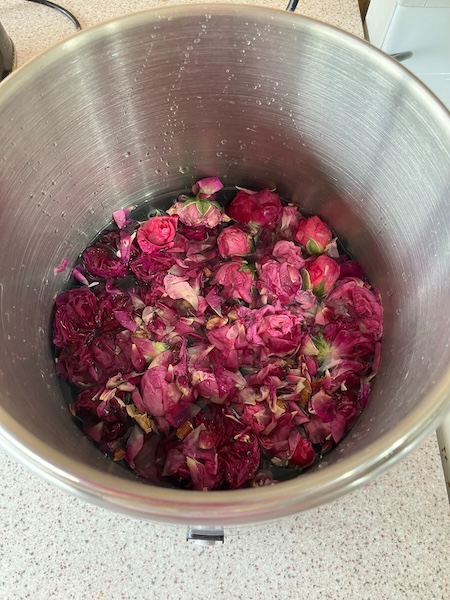
After about twenty minutes of heating, the strong scent of rose essential oil gases began filling the kitchen. A minute after that, the combined liquid of rose essential oil and rose water began exiting the pot still.
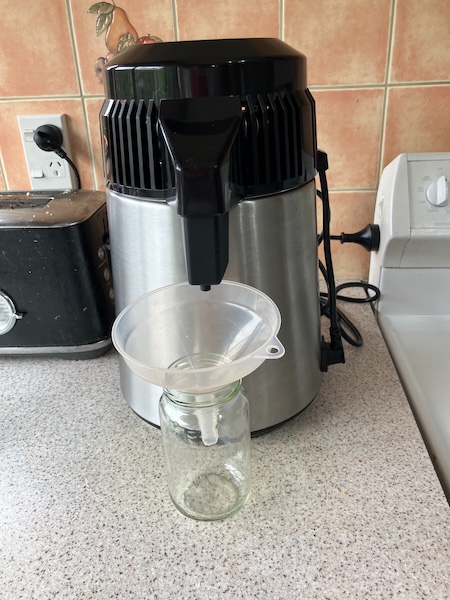
The distilling process took about an hour, and I was left with 700 mL of combined rose essential oil and rose water afterward. The amount of rose essential oil was tiny compared to the rose water, so I decided to leave the two combined for storage. I split the resultant rose water into two 350 mL containers, and gave one to my sister, who likes to make natural products for her home.
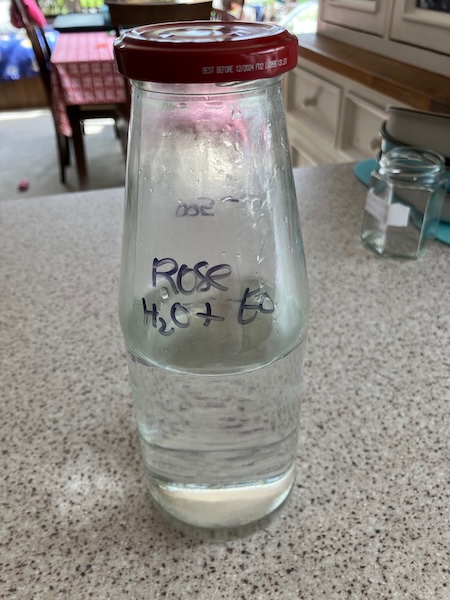
I'm really pleased with the resulting rose water, which smells lovely, and in the coming years as my rose bushes grow, I'll get bigger harvests of rose flowers each year. My plan with the rose water this year is to use it in my cold-processed soap recipe later on this summer.
Have a wonderful day
Julie-Ann
Want to discuss my post? Feel free to chat with me on Instagram or Mastodon or Bluesky.
Signs of Spring 2024
Hello friends,
Spring is just around the corner, and my garden is showing many signs of spring. I'd thought I'd share with you some photos I've taken recently.
My miniature Irises have already put on a show with their beautiful, dainty flowers.
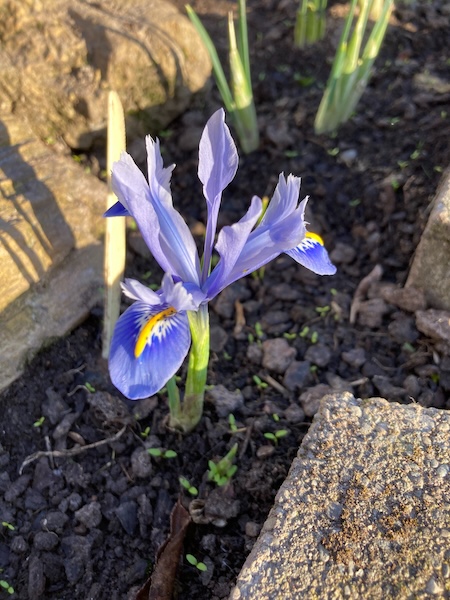
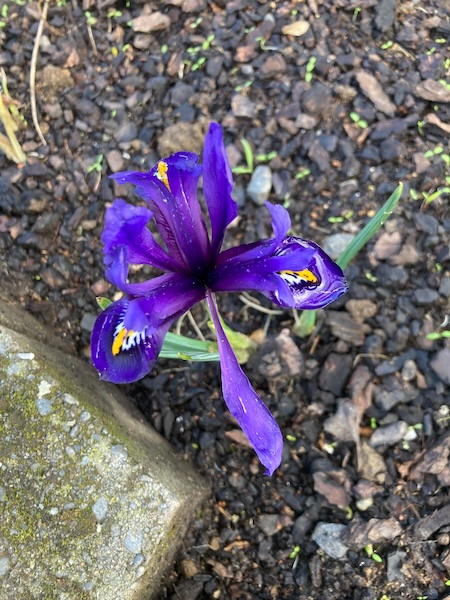
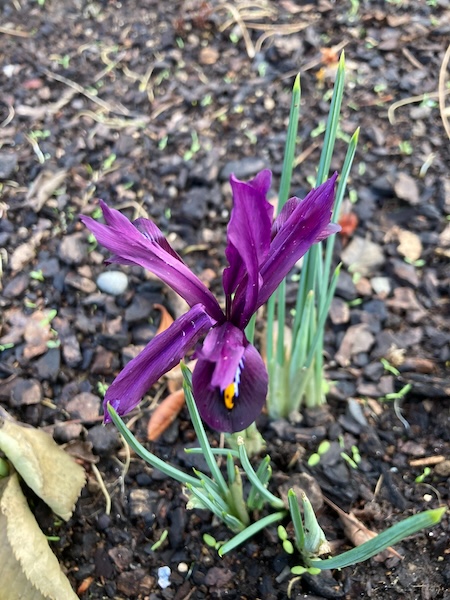
Crocuses have also been flowering.
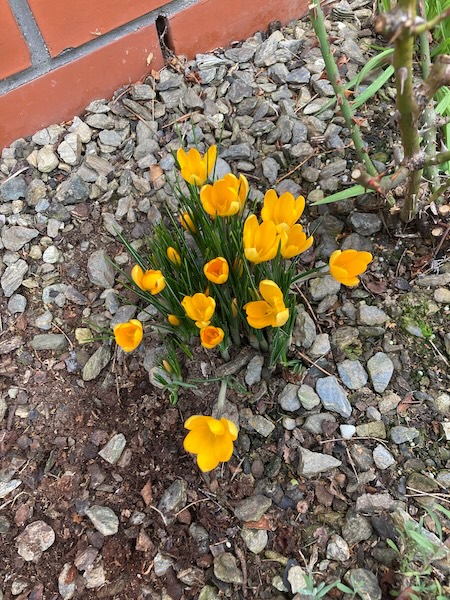
As are a lot of my daffodil varieties.
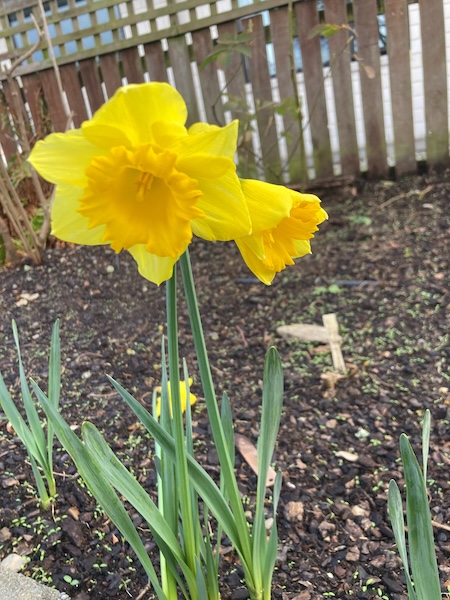
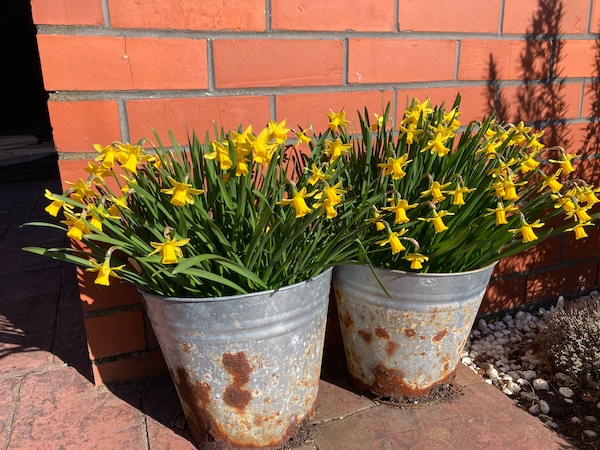
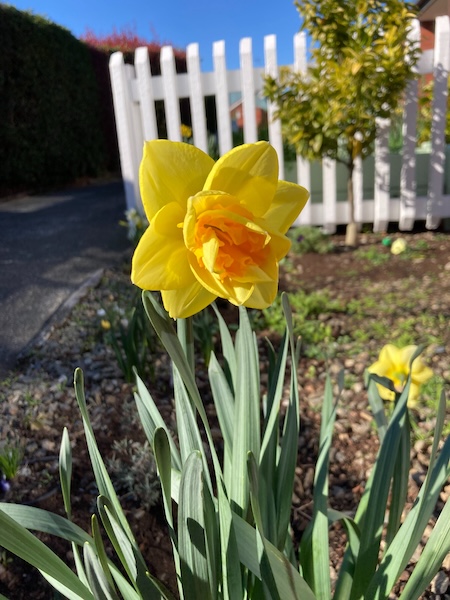
And finally, my deciduous shrubs and trees have started breaking their buds, and there's also blossom appearing on our fruit trees.

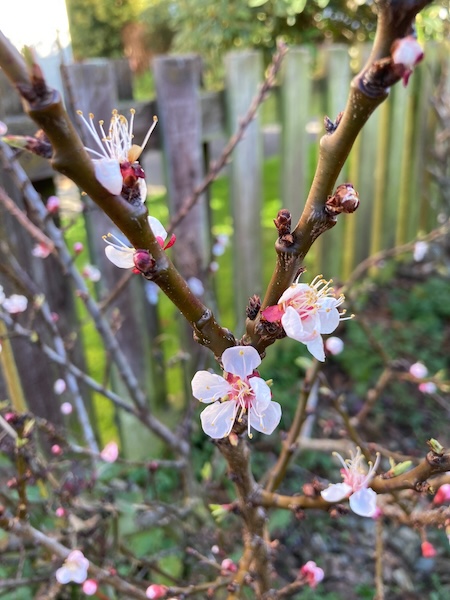
Spring is less than a week away, and I'm so excited for warmer and longer days. There's lots to do in the garden now, so it's time to get on with all the things, especially seed sowing.
Have a wonderful day
Julie-Ann
Want to discuss my post? Feel free to chat with me on Instagram or Mastodon or Bluesky




